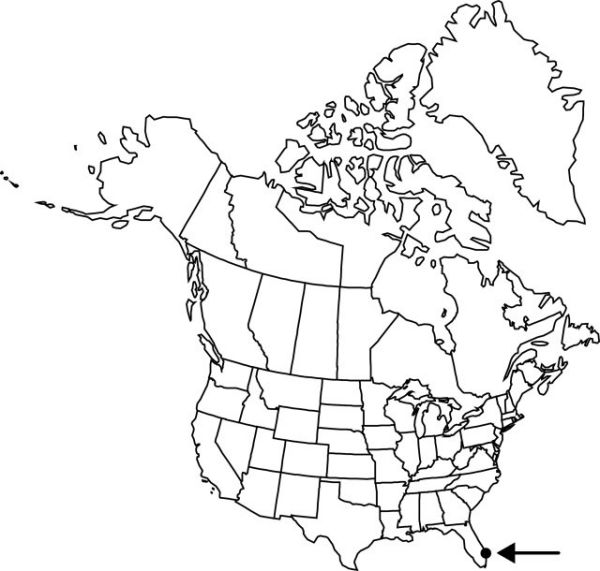Eichhornia azurea
Eichhornia, 4. 1842.
Plants perennial, typically rooted in mud. Vegetative stems elongate, developing to and growing at water surface. Flowering-stems erect, 8–12 cm, glabrous, distal internode 2–10 cm. Sessile leaves submersed, alternate on elongate stem. Petiolate leaves emersed; stipule 7–13 cm, apex truncate; petiole never inflated, 11–25 cm; blade round, 7–16 × 2.3–16 cm. Spikes 7–50-flowered, individual flowers open 1 day only; spathes obovate, 3–6 cm; peduncle 1.9–15 cm, pubescent with orange hairs. Perianth blue or white, limb lobes obovate, 13–25 mm, margins erose, central distal lobe dark blue at base with yellow distal spot; proximal stamens 15–29 mm, distal 6–20 mm; anthers 1.2–2.3 mm; style 3-lobed. Seeds 10–13-winged, 1–1.8 × 0.8–1.1 mm.
Phenology: Flowering (probably) Jun–Oct.
Habitat: Coastal rivers, lakes
Elevation: 0–100 m
Distribution

Introduced; Fla., Central America to South America (n Argentina)
Discussion
Eichhornia azurea is on the USDA/APHIS noxious weeds list (D. C. Schmitz 1990) and is known only as a waif from several locations in Florida (R. G. Westbrooks 1990). It has been reported from Texas (L. H. Shinners 1962b), but this record was based on a misidentified specimen (Jones 1160, SMU) that actually is E. crassipes. All known populations in Florida have been eradicated by the Florida Department of Natural Resources. R. G. Westbrooks specifically noted a population growing in a residential estate pool in Palm Beach that was eradicated in June 1988. Another collection from Columbia County (N. Coile 5793, NBYC) was also eradicated.
The breeding system of Eichornia azurea, a tristylous species, is more like that of Pontederia species than that of E. crassipes (S. C. H. Barrett 1978). Populations typically have a mix of all three floral morphs, allowing for outcrossing.
The above description is based on South American material.
Selected References
None.
Lower Taxa
"elongating" is not a number.